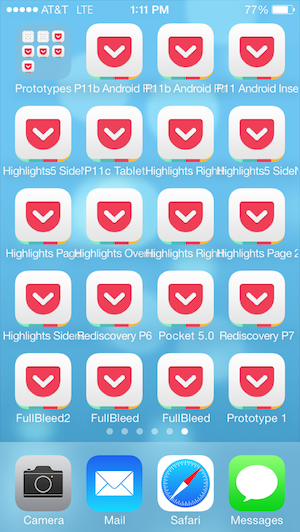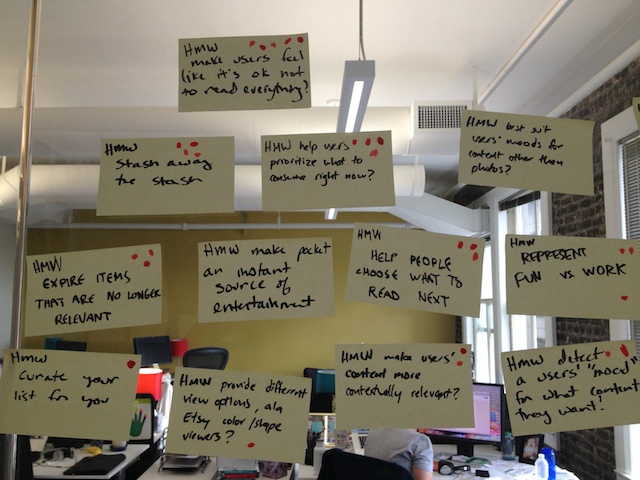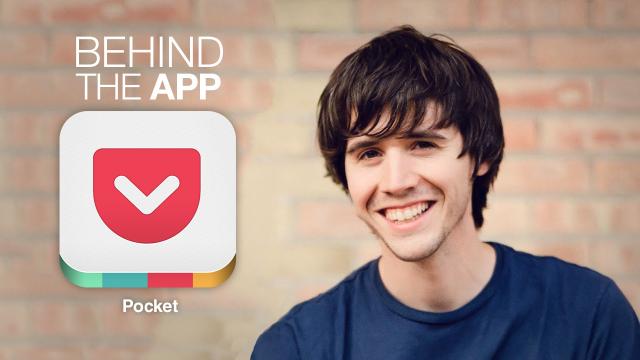We’ve long been fans of Pocket, the bookmarking service that allows you to save stuff to read or watch later. Now, Pocket has added Highlights, an update that scans your saves and highlights the content most likely to interest you. We chatted with Pocket’s founder Nate Weiner about the app’s newest feature.
An introduction to Pocket.
Where did the idea for Highlights come from? Were you trying to solve a problem you’d experienced, or did the inspiration come from somewhere else?
Highlights was a feature we had talked about, prototyped, and dreamed about for years, going all the way back to the early days of the product. It was one of those need-to-be-the-right-place-and-time features so we patiently waited for its time.
Over the last few years we’ve put a heavy focus on making it really easy to save to Pocket no matter where and how people discover content. We knew that as we made it easier to save, the bigger your list would be over time. Today, the majority of Pocket users have over 100 unread items in their list. When you have a list this big, it gets a lot harder to pick something when you open Pocket. Worse, it means that the more you save, the more you end up burying great content never to see it again.
The problem is that just taking all of the content that you’ve saved, putting it in a list and ordering it by newest to oldest doesn’t map at all to how people want to select something when they open Pocket. The order in which you save is not necessarily the order in which you want to consume something: We found, through our own use and in user studies, that people pick something based on 3 factors: time (how much time do I have?), interest (what am I in the mood for?) and relevance (what’s new/worth reading?). We always loved the idea of “going beyond the list” and Highlights was our first step into making an experience to do this.
After you came up with the idea, what was the next step?

We prototyped a lot. In the months leading up to the final release, my phone looked like this where each icon is a different prototype. (Pictured at left.)
It wasn’t just design prototypes either. Over the last few years we experimented with a wide range of options. Some of these experiments launched, for example, during the Read It Later days, we had a feature called Digest which automatically grouped content that you saved into topics that you specified (kind of like smart folders). While at the time it was a bit too much, too soon and was eventually discontinued, we learned a lot about how users interacted with and organised the content they save to Pocket.
In October 2012, we did a Google Venture Design Sprint to really help refine our ideas into a new direction. Finally, the biggest thing we had to do was to wait. Even though this was a feature we wanted, in order for Highlights to be great, it had to be smart. It had to know what content was good and how to group content together. In order for us to be able to do this, Pocket had to achieve a certain size so that we had enough signals to help draw the insights that make up Highlights. Now with over 1.5M items being saved to Pocket every day, we had a lot that we could use to help make the Pocket experience even better. [clear]

Pictured above: An image from Pocket’s Design Sprint.
How did you choose which platforms to target and which to ignore or wait on?
In almost all of our major releases, we’ve released new features to every platform that we have apps for. For Highlights we decided to focus on mobile first because we found that the mobile use case had the most urgent need to help people select something to view faster. The use cases between, phone, tablet and desktop are different enough that launching Highlights on mobile first allows us to learn more and bring it to desktop soon.
What was your biggest roadblock and how did you overcome it?
The biggest issue we ran into was trying to find a one-size-fits-all solution. Our first ideas and iterations over the years were focused on building one feature that would help solve this problem. Originally we had experimented with some versions that completely replaced the list with Highlights as a “cover” view.
We quickly found that the list didn’t need to be replaced. The list actually was really good for finding the most recent content that you saved. It’s right there at the top of Pocket when you open it. Where the list becomes less useful is as you scroll farther down it, the less relevant the content becomes and harder it is to know what is good. We solved this by having Highlights call out specific items that we know are high quality as you scroll so even if you get 100 items down in your list, you are still quickly able to see what’s good vs bad.
Then the rest of Highlights fit into different us cases across Pocket. If you just want to see the best stuff organised by interest or time, you can open up the main Highlights view to quickly find something to suit your mood. If you are on a phone and only have a few minutes, the quick mobile Highlights that show at the top of your list is an even faster way to get a quick pick without having to scroll or change views.
This is why it’s so important to prototype with real experiments. By actually playing with a number of options it became pretty clear that instead of trying to force to one behaviour, we could make a far better experience by using the idea behind Highlights to improve the experience throughout Pocket.
What was launch like for you?
The launch might have been one of the most exciting (and intense) ones we’ve done to date. We launched Highlights at our first ever Pocket press event. In addition to Highlights, we launched another major feature called Pocket Preferences, the easiest and most powerful way to get new users started and improve retention and engagement.
We were blown away by the excitement and energy that came from the event and the reaction to the release. People had been overwhelmed by the number of items that they had saved to Pocket and Highlights immediately started helping solve a real problem for the majority of Pocket users.
This first version is just the tip of the iceberg, we’ve got a lot that we want to do to make Pocket’s platform improve the experience inside and outside of Pocket.
What advice would you give to others that want to take on a similar project?
Highlights was the biggest change to our UI since the Read It Later to Pocket rebrand. This wasn’t a task that we took lightly and it was important to us to significantly improve the experience, not to just change it. We always strive to refine the core parts of what makes Pocket Pocket while continuing to expand the product in ways that makes the product even better.
In order to do this, it’s important to make sure you clearly define and understand the problem that you are trying to solve and who you are solving this for. This is super important for getting the team aligned on the goals, empathizing with the user and having a clear point of view in which to evaluate the effectiveness of the product explorations. Then with this focus go really wide, prototyping and experimenting with a wide range of directions and hypothesis. Prototyping is essential to get feedback and learn what is working, what isn’t working, what can be improved upon and help you find alternative solutions.
Have patience and don’t force solutions. There are plenty of high value problems to solve in every product. We worked on and off Highlights for over two years. Each round helped us focus, understand and explore the opportunity in each subsequent round until the time was right and we had the size, data, and experience to bring it all together.
Lifehacker’s Behind the App series gives an inside look at how some of our favourite apps came to be — from idea to launch (and beyond).

Comments
2 responses to “I’m Nate Weiner, And This Is The Story Behind Pocket’s Highlights”
I can safely say this is the most used app on my phone, it has brought me so much closer to reading articles around the web, and reading over all in general. Nate is a hero in my eyes, don’t care if there was a read-it-later app already in existence before this.
I just saved this article in Pocket, because I don’t have the time to read it now and here.